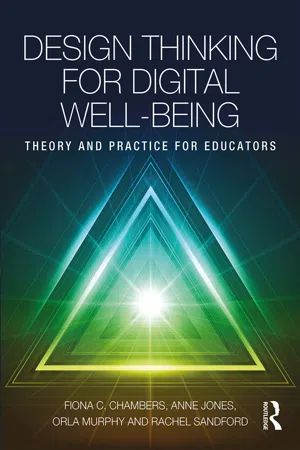
Design Thinking for Digital Well-being
Theory and Practice for Educators
- 202 pages
- English
- ePUB (mobile friendly)
- Available on iOS & Android
Design Thinking for Digital Well-being
Theory and Practice for Educators
About This Book
Design Thinking for Digital Well-being empowers teacher educators/student teachers to teach pupils how to critically embrace technology in their lives. It provides a pedagogical framework for teaching young people to flourish in a digital society and enjoy digital well-being. In so doing, it establishes the need for digital literacy, digital fluency and values fluency within the education system as a whole.
With a unique focus on empathy-centric design thinking, and using a case study informed educational model of technological, pedagogical and content knowledge (TPACK), this expert guide:
• Explores the challenges that pupils (and teachers) face balancing their digital lives
• Supports the 'wired generation' in navigating the cyber sphere and understanding how their data are used
• Acknowledges the necessity of supporting the digital well-being of pupils (and teachers) to create a healthy and successful learning environment
• Promotes the effective use of technology to enhance teaching and learning
• Aids professionals in ensuring pupils enjoy digital literacy, digital fluency, values fluency and safety online
Design Thinking for Digital Well-being deals with the core concepts of digital literacy, digital fluency and values fluency that are essential for anyone in the teaching profession. It is a source of support and guidance for all those involved in exploring the challenges of using technology to promote digital well-being.
Frequently asked questions
Information
Index
Table of contents
- Cover
- Half Title
- Title Page
- Copyright Page
- Dedication Page
- Table of Contents
- List of Figures
- List of Tables
- Authors’ introduction
- Section One: Being human in a digital world
- Section Two: Building a pedagogical model for values fluency
- Section Three: Values dilemmas: case study approach
- Section Four: A praxis model for digital well-being
- Glossary of terms
- Index